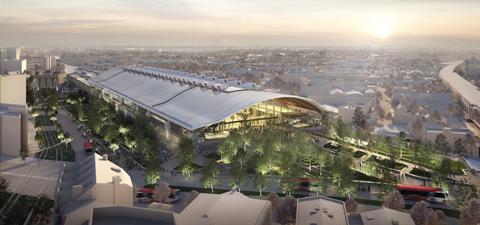Supreme Court decided hope value of four sites on route should be considered together, not separately
Compulsory purchases for major infrastructure projects could cost less in the future, after a landmark Supreme Court ruling described as a ‘blow to landowners’.
In Secretary of State for Transport (Appellant) v Curzon Park Ltd, the court was deciding whether the so-called hope value of four sites, each with different owners, should be considered together or separately.

The landowners of the plots, which are being acquired by the government to be used for Curzon Street Station, had applied for Certificate of Alternative Appropriate Development as they believe the sites could have planning potential for which they should be compensated.
The Secretary of State for Transport argued that these applications should be considered together to avoid the public purse having to bear more compensation than it should.
While the Upper Tribunal agreed with the secretary, the decision was successfully brought to the Court of Appeal, after which it was appealed to the Supreme Court.
In a unanimous ruling issued last Thursday, the court restored the ruling initially made by the Upper Tribunal.
Richard Flenley, partner at law firm Charles Russell Speechlys, said the decision would “come as a blow to the landowners” and that it “could have far reaching consequences not only in respect of HS2 but other compulsory acquisition schemes”.
“The judgment will come as a relief to HS2 as compensation for landowners may well be reduced, with doubt now being cast as to what the outcome of the Upper Tribunal’s review of the alternative appropriate development applications will be,” he said.
“This comes at the same time that the government is seeking to review and potentially reform the current system for compensation for the compulsory acquisition of land.
“This case challenges the current approach that is taken when assessing development potential of land subject to compulsory acquisition, and we will now await to see if the decision will lead to any legislative change in this area of compensation and planning law.”
It comes as engineers on the project prepare to bury two large diggers under Old Oak Common station so that tunnelling work can begin immediately if ministers decide to re-start the paused work at Euston.
Transport secretary Mark Harper announced in March that the job would be put on pause for two years. More than 1,200 had been working at Euston but this has been whittled down to a skeleton crew.
According to the National Audit Office, the cost of the station is now £4.8bn, up from an original budget of £2.6bn.
The two boring machines will be named and blessed in a Christian ceremony featuring a statue of St Barbara, the patron saint of tunnelling.
Even if approved, HS2 is now not expected to run services to Euston until 2041 at the earliest.




























No comments yet